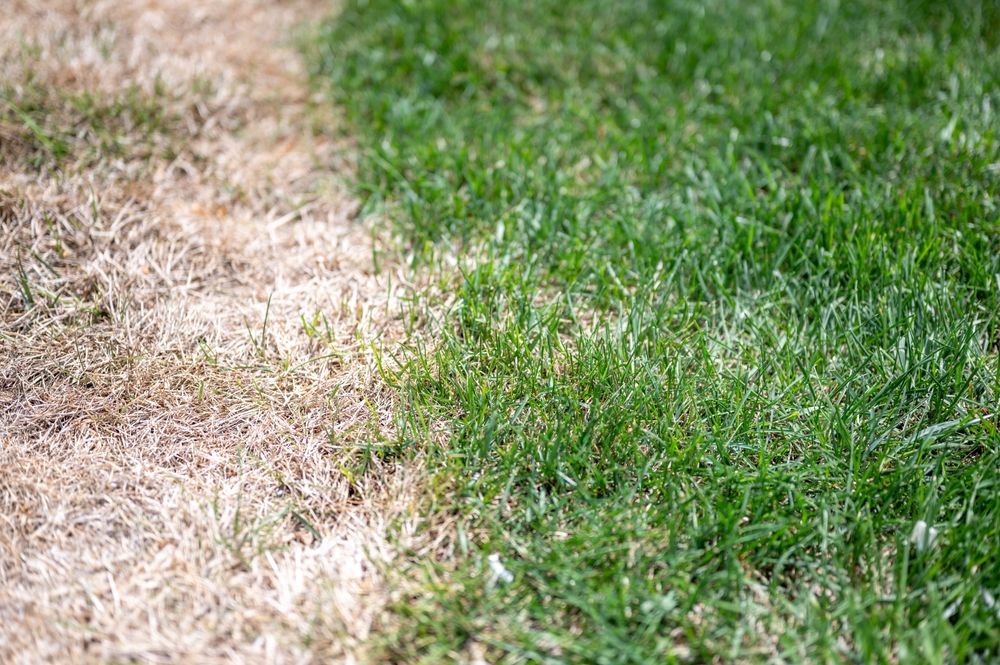Applying lime, otherwise known as calcium carbonate, has numerous benefits for the health of a person’s lawn and garden. It works to neutralize soils by reducing acidity and improving the growth of grass, trees and other plants. Through this process, vital nutrients are broken down so vegetation can use them more readily. It also helps break down clay-based soil into crumblier, looser dirt that doesn’t pack together and makes it simpler for root systems to penetrate the surface layer. In addition, lime fights off nuisance weeds with its alkaline properties which sow seeds struggle to thrive in. Eventually, this invites more desirable plant life over those pesky interlopers trying to turn the garden into their own. Applying lime is an essential part of maintaining top-notch gardening projects and beautiful landscapes without becoming overrun with weeds or wasting money on products unsuitable for your low-maintenance yard.
Lime is an invaluable soil amendment that can help lawns stay lush and vibrant year-round. With the right application techniques, homeowners can enjoy a healthy, low-maintenance yard with plenty of life and color. However, it’s important to understand when and how to apply lime to benefit the soil most effectively. By doing some basic soil testing, you can determine the ideal timing for applying lime and the correct amounts for your yard. With expert guidance from lawn care professionals, you can ensure your lawn gets all the nutrients it needs to stay green and beautiful!
When to Apply Lime to Your Yard
To determine when the best time to apply lime is, you should first measure the soil’s pH levels. Generally, if the results are below 6.5 then applying lime is necessary for optimal growth. If you live in a cold climate, apply your lime in the early spring before the ground becomes too cold; for hot climates it’s best to wait until summer so that maximum absorption can occur during warm weather months. Applying too much lime can be just as detrimental as applying too little, so it’s important to check with an expert or reference guidelines on amounts needed per square foot of soil. Taking the time to properly analyze your soil type and condition will ensure success when applying lime to your yard.
What is lime and why should it be applied to a yard?
Lime is a naturally-occurring mineral that is used as a soil amendment to act as a pH adjuster for areas with overly acidic soils. It helps to balance the pH level so plants can more readily absorb important nutrients from the soil, leading to healthier growth and fuller blooms with stronger color. When it’s applied to yards, lime helps keep grass green, flower beds full of life, and trees and shrubs vibrant. Because its benefits are so varied, regular applications of lime are recommended by lawn care experts in order to maintain lush lawns, gardens, and landscaping throughout the year.
Soil testing for acidity levels

Soil testing for acidity levels is an important step in successful gardening. Acidic soils are not necessarily a bad thing, but too much acidity can stunt the growth of plants and even corrode tools like shovels and spades. The optimum pH level for most gardens is between 6.2 and 6.8, although certain plants prefer different levels. Knowing the exact acidity level allows gardeners to make informed decisions about what plants to cultivate and how best to take care of them. Testing soil is easy and can be done quickly with specialized testing kits available at any gardening store. Results give a better understanding of the composition of your soil, guaranteeing consistent results from planting season to planting season.
Conclusion
Lime is an essential soil amendment that helps keep yards lush and vibrant, but its benefits can only be realized when it’s applied correctly. Soil testing should always be done to determine the ideal timing and amounts of lime application. For assistance with these steps, lawn care experts can provide helpful advice on how best to apply lime to yards so they stay green throughout the year. With the right amount of lime, homeowners can enjoy a healthier, low-maintenance yard that’s full of life and color!

